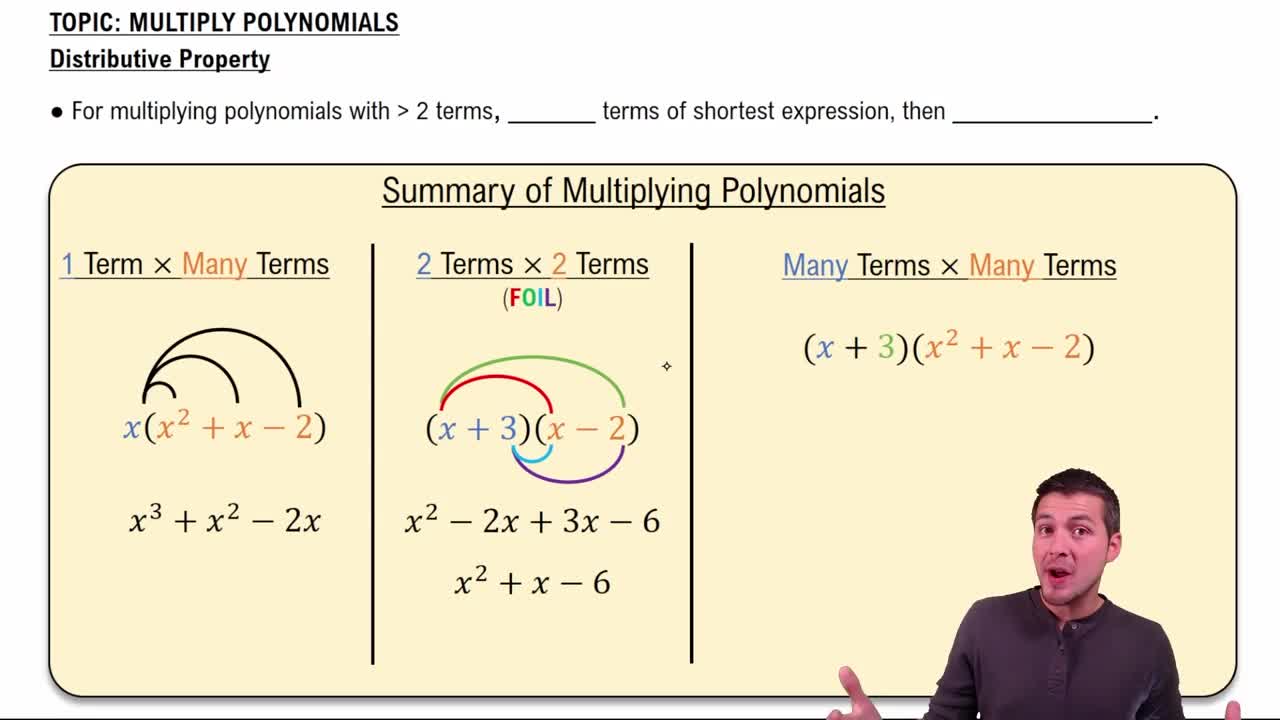Here are the essential concepts you must grasp in order to answer the question correctly.
Multiplying Binomials
Multiplying binomials involves applying the distributive property, often referred to as the FOIL method (First, Outside, Inside, Last). This technique helps in systematically multiplying each term in the first binomial by each term in the second binomial. For example, in the expression (a + b)(c + d), you would calculate ac, ad, bc, and bd, then combine like terms.
Recommended video:
Multiply Polynomials Using the Distributive Property
Difference of Squares
The difference of squares is a specific algebraic identity that states that the product of two conjugates, such as (a - b)(a + b), equals a² - b². This identity simplifies calculations significantly, as it eliminates the need to multiply each term individually. In the given problem, (3 - 5√2)(3 + 5√2) can be simplified directly to 3² - (5√2)².
Recommended video:
Solving Quadratic Equations by Completing the Square
Simplifying Radical Expressions
Simplifying radical expressions involves reducing the expression to its simplest form, which often includes removing perfect squares from under the radical sign. For instance, √(a²) simplifies to a. In the context of the problem, after applying the difference of squares, any resulting radical expressions should be simplified to ensure the final answer is in its most concise form.
Recommended video:
Radical Expressions with Fractions
 Verified step by step guidance
Verified step by step guidance Verified video answer for a similar problem:
Verified video answer for a similar problem:

